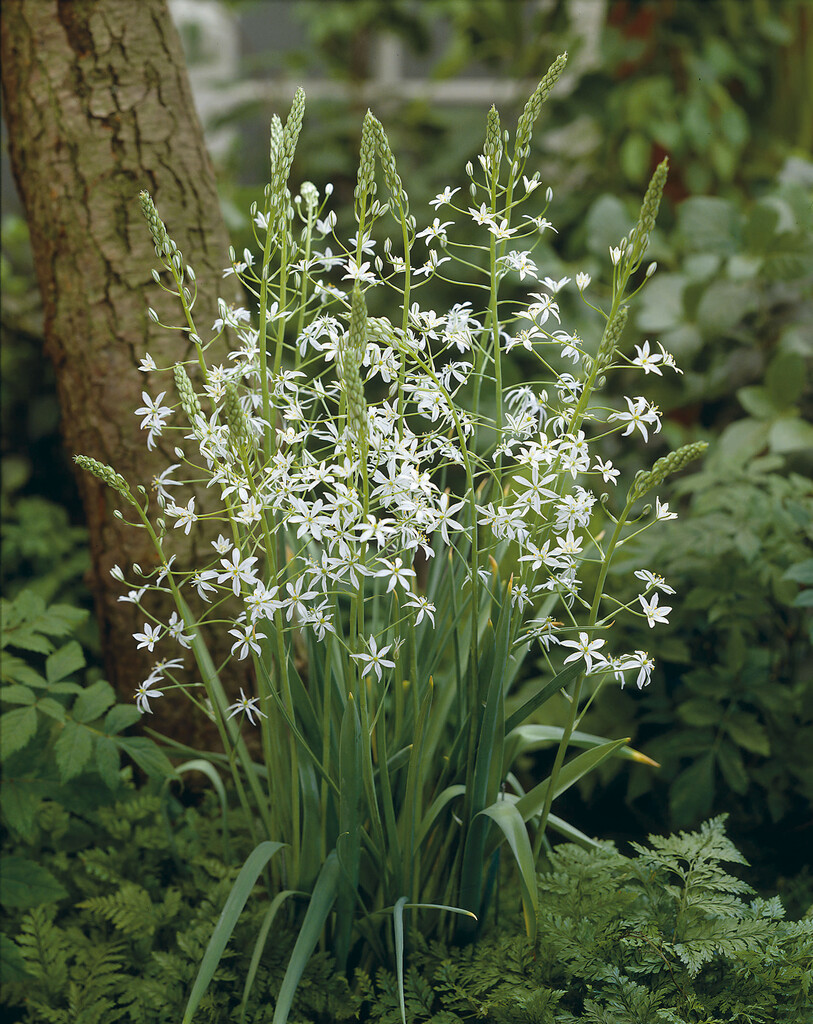Not the plant you're looking for? Search over 300,000 plants
Bulbs
Size
Ultimate height
0.5–1 metresTime to ultimate height
2–5 yearsUltimate spread
0–0.1 metreGrowing conditions
Chalk
Clay
Loam
Sand
Moisture
Moist but well–drained, Well–drainedpH
Acid, Alkaline, NeutralColour & scent
| Stem | Flower | Foliage | Fruit | |
| Spring | White | |||
|---|---|---|---|---|
| Summer | White | |||
| Autumn | ||||
| Winter |
Position
- Full sun
Aspect
South–facing
Exposure
Exposed or Sheltered Hardiness
H4Botanical details
- Family
- Asparagaceae
- Native to GB / Ireland
- No
- Foliage
- Deciduous
- Habit
- Bushy
- Potentially harmful
- Harmful if eaten. Wear gloves and other protective equipment when handling TOXIC to pets if eaten (dogs, cats, rabbits, rodents) - see the HTA guide to potentially harmful plants for further information and useful contact numbers
- Genus
Ornithogalum are bulbous perennials with linear or strap-shaped basal leaves and racemes, sometimes contracted, of star-shaped or cup-shaped, white, yellow or orange flowers
- Name status
Correct
- Plant range
- Mediterranean to W Iran
How to grow
Cultivation
Plant 10cm deep in autumn in any moderately fertile, well-drained soil
Propagation
Propagate by seed, sown in autumn or spring, in containers in a cold frame or separate offsets when dormant
Suggested planting locations and garden types
- City and courtyard gardens
- Coastal
- Cottage and informal garden
- Flower borders and beds
Pruning
No pruning required
Pests
Generally pest-free
Diseases
Generally disease-free
Love gardening
Sign up to receive regular gardening tips, inspiration, offers and more
View our Privacy Policy
Get involved
The Royal Horticultural Society is the UK’s leading gardening charity. We aim to enrich everyone’s life through plants, and make the UK a greener and more beautiful place.
